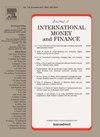小型开放经济体中的资产泡沫与金融摩擦☆。
IF 3.3
2区 经济学
Q2 BUSINESS, FINANCE
引用次数: 0
摘要
涉及资产泡沫的金融周期经常与信贷条件的周期性扩张和收缩相吻合。资产和信贷泡沫的崩溃往往先于金融危机和经济衰退。我们建立了一个包含资产泡沫和银行业摩擦的小型开放经济 DSGE 模型。信贷受限的企业交易本质上无用的泡沫资产。受资产负债表限制的金融中介将银行摩擦引入金融市场。静态分析表明,国外利率的上升会对国内泡沫的形成产生不利影响。动态分析表明,资产泡沫会放大宏观经济波动,而银行杠杆约束会加剧这种影响。因此,资产泡沫会放大和传播经济波动。非常规货币政策、宏观审慎政策和泡沫救助政策可以缓解银行杠杆约束和资产泡沫破裂对宏观经济波动的放大效应,分别通过降低风险溢价、抑制资本外流和维持资产泡沫渠道来实现。最后,将非常规货币政策与泡沫救助政策和宏观审慎政策结合起来会产生更好的结果。本文章由计算机程序翻译,如有差异,请以英文原文为准。
Asset bubbles and financial frictions in small open economies☆
Financial cycles involving asset bubbles frequently coincide with the cyclical expansion and contraction of credit conditions. The collapse of asset and credit bubbles frequently precedes financial crises and economic recessions. We develop a small open economy DSGE model that incorporates asset bubbles and banking frictions. Credit-constrained firms trade in intrinsically useless bubble assets. Financial intermediaries, constrained by their balance sheets, introduce banking friction into financial markets. The static analysis suggests that increases in foreign interest rates unfavorably impact the formation of domestic bubbles. Dynamic analysis indicates that asset bubbles amplify macroeconomic fluctuations, with banking leverage constraints intensifying this effect. Therefore, asset bubbles amplify and propagate economic fluctuations. Unconventional monetary policy, macroprudential policy, and bubbly bailout policy could mitigate the amplification effects of banking leverage constraints and asset bubble bursts on macroeconomic fluctuations, which are mediated through reducing risk premiums, curbing capital outflows, and sustaining asset bubble channels, respectively. Finally, combining unconventional monetary policies with bubbly bailout policies and macroprudential policies yields superior outcomes.
求助全文
通过发布文献求助,成功后即可免费获取论文全文。
去求助
来源期刊

Journal of International Money and Finance
BUSINESS, FINANCE-
CiteScore
4.20
自引率
4.00%
发文量
141
期刊介绍:
Since its launch in 1982, Journal of International Money and Finance has built up a solid reputation as a high quality scholarly journal devoted to theoretical and empirical research in the fields of international monetary economics, international finance, and the rapidly developing overlap area between the two. Researchers in these areas, and financial market professionals too, pay attention to the articles that the journal publishes. Authors published in the journal are in the forefront of scholarly research on exchange rate behaviour, foreign exchange options, international capital markets, international monetary and fiscal policy, international transmission and related questions.
 求助内容:
求助内容: 应助结果提醒方式:
应助结果提醒方式:


